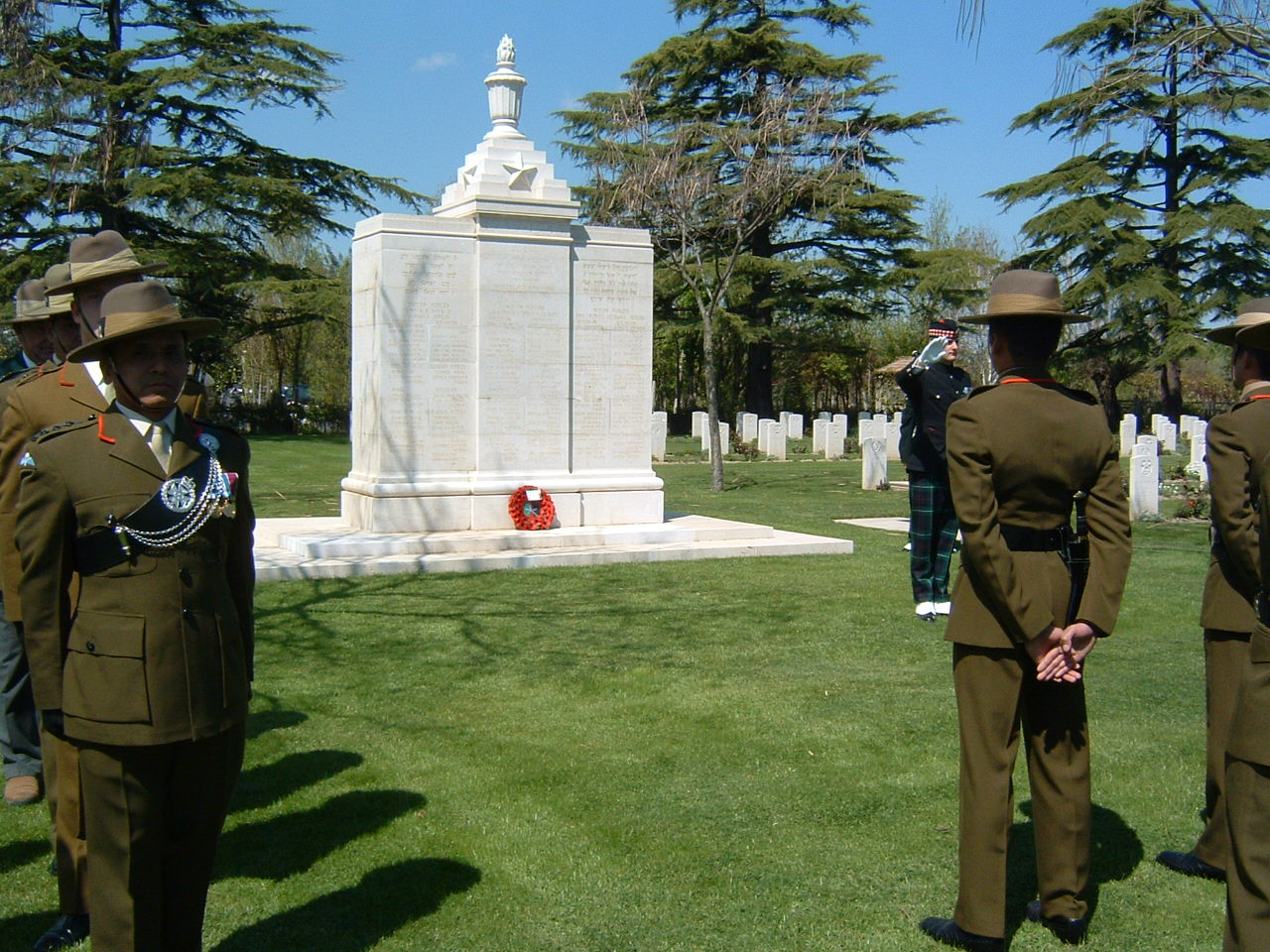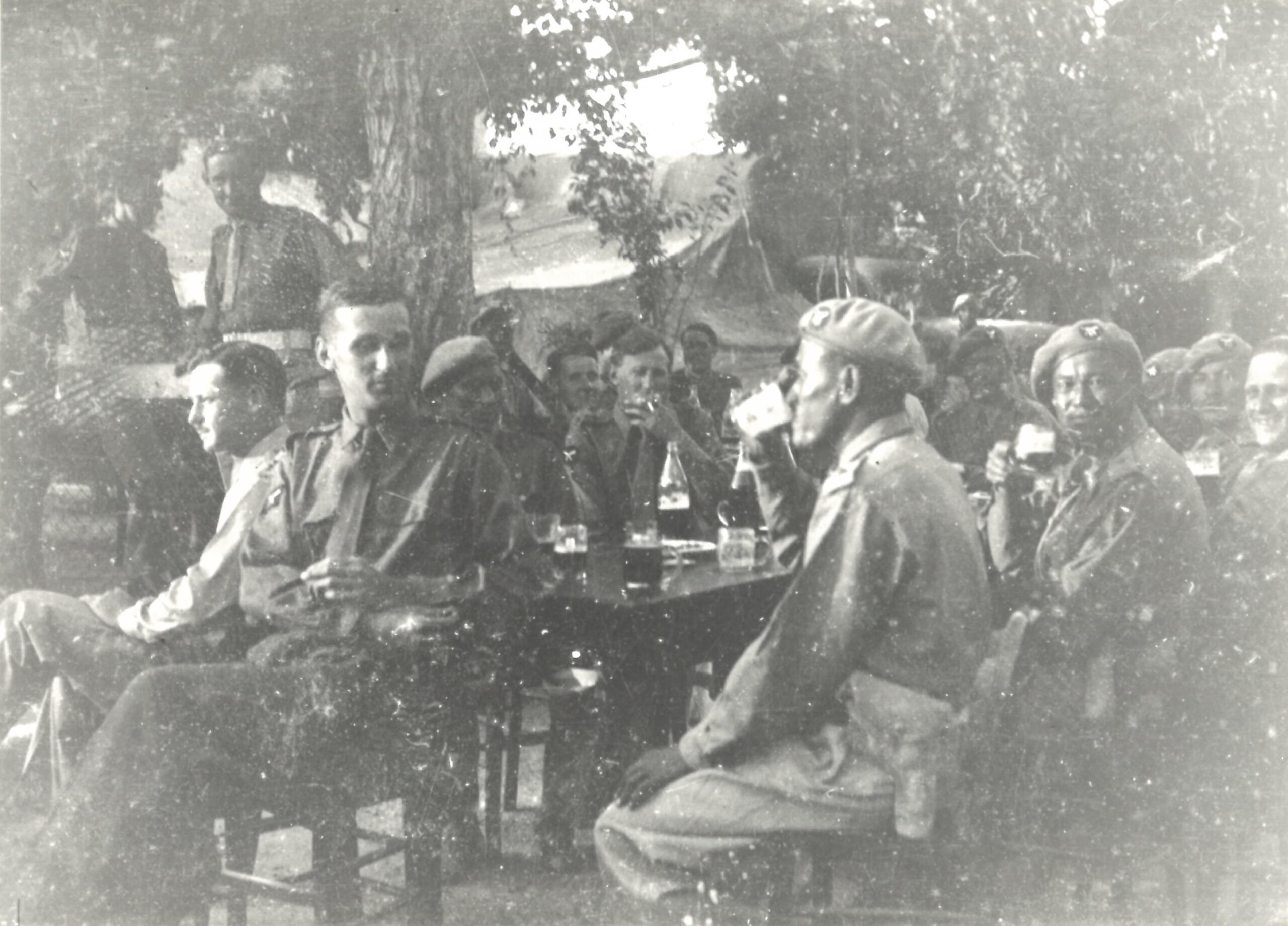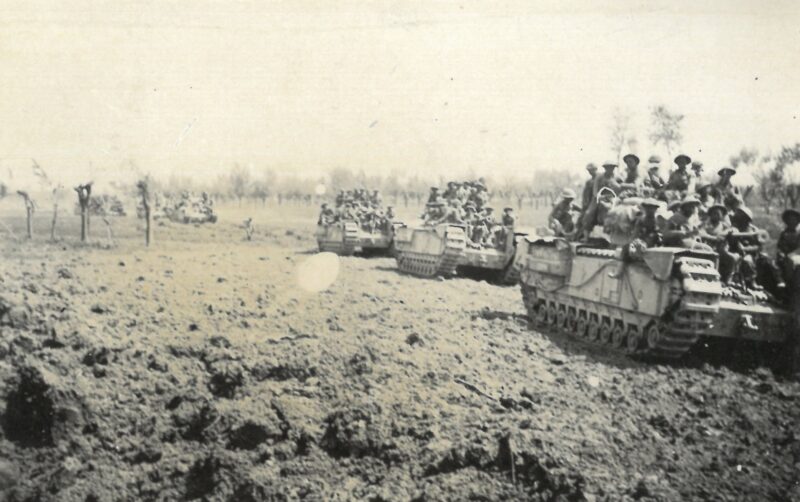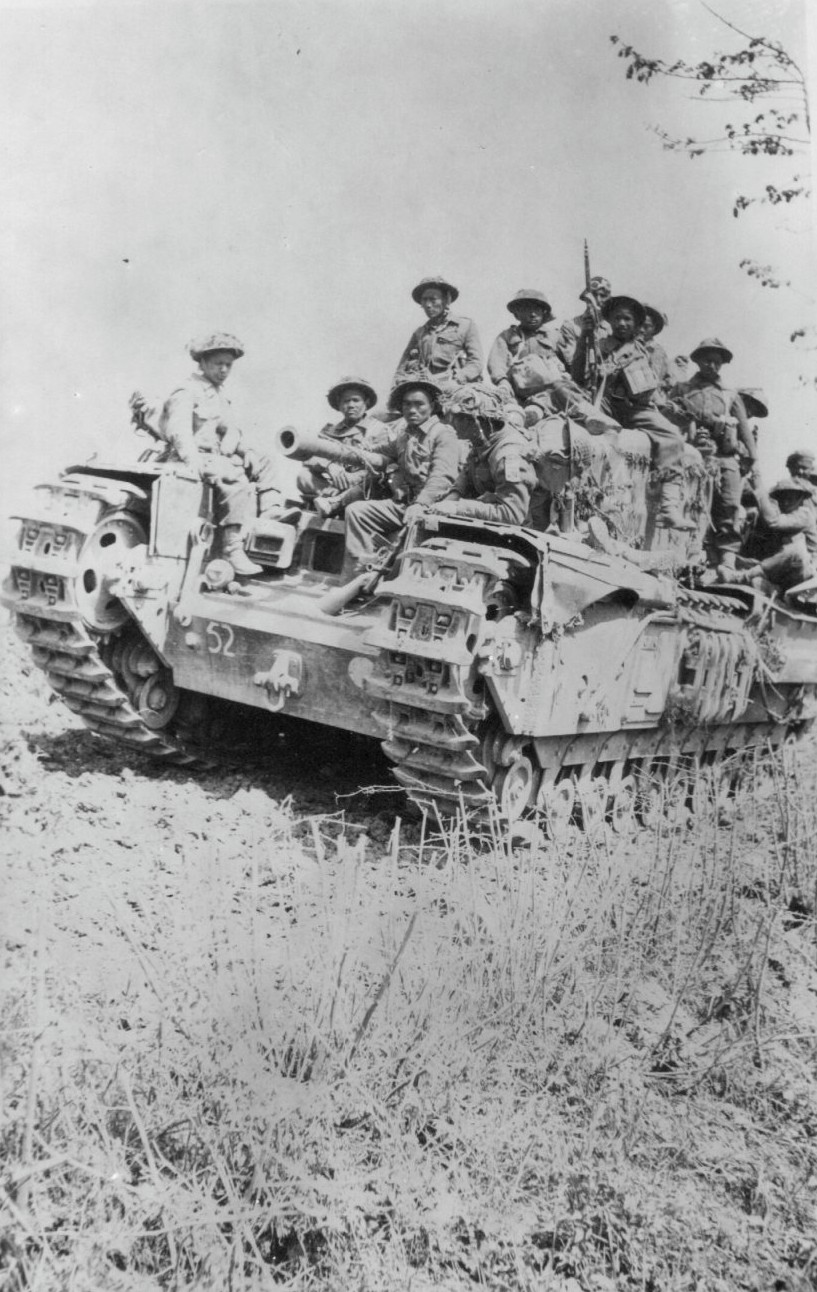Victory in Europe
Though often eclipsed in popular memory by events in north-west Europe, the Italian Campaign was a vital thrust in the effort to defeat Nazi Germany. Besides liberating the Italian people from German occupation, the campaign also pinned down Axis units that might otherwise have been sent to reinforce the western and eastern fronts.
After the Far East Theatre, the Italian Campaign saw the Gurkha’s second largest involvement in the Second World War. The Gurkhas in Italy had fought in every major offensive, won two Victoria Crosses, and saw the death and injury of thousands of their comrades.

In 2005, soldiers of the 1st Battalion, Royal Gurkha Rifles visited Italy to mark the 60th anniversary of the Battle of Medicina, where they paid tribute to their forebears who fell in the Italian Campaign.
Perhaps for this reason, the men of 2/3GR were ‘astonishingly unimpressed’ when they learned of the surrender of German forces in Italy. It was only six days later, when the news broke of Germany’s complete unconditional surrender, that they showed any enthusiasm. In the 2nd Battalion, 6th Gurkha Rifles the atmosphere was much more jubilant, with the end of hostilities being celebrated by nautch dances.

British and Gurkha officers of 2/6GR share a drink to celebrate Germany’s surrender, Monfalcone, May 1945
In Vescovano, Winton Churchill’s announcement of Germany’s surrender was played on loudspeakers, delighting the men 1/5RGR. The following day, the Gurkha officers hosted the British officers in their mess, and whilst sat together they listened to a victory speech by King George VI. The speech was written down and translated into Nepali by Jemadar Satya Saran Khattri, who read it aloud to the men.
In 2/4GRs sector, news of Germany’s capitulation on 2 May filled the night air with the flash and crackle of rifle volleys as troops marked the end of the fighting. Regrettably, the shooting cost 2/4GR its final casualty of the war when a rifleman was wounded by a stray bullet. Despite this incident, the following week was a highlight of the battalion’s war service as the Gurkhas enjoyed parades, games and a steady supply of wine from the grateful Italian populace.
Major Denis Drayton of the 7th Gurkha Rifles was in the UK when the news broke, attending the wedding of a fellow Gurkha officer. The guests included half a dozen Gurkha soldiers, who had been convalescing nearby after their liberation from a German prisoner of war camp. The following day Drayton took the Gurkhas into London, where they joined in the mass celebrations that had taken over in the city.
Across the world on India’s North West Frontier, the 2nd Battalion, 5th Royal Gurkha Rifles celebrated by staging a battle demonstration for thousands of local people. The demonstration caused great excitement when the live ammunition ignited the grass and caused a fire. However, this did not derail the celebrations, with the rest of the day seeing feasting, wrestling and khud races.
But the celebrations could only last so long. Whilst the fighting was over, Europe was nevertheless in a state of disarray. Allied troops would be needed to occupy captured territory, accept surrenders, police partisan groups, and relocate millions of refugees and prisoners of war.
Churchill’s speech on 8 May had also come with the solemn reminder that whilst Germany had been defeated, the war was not over. In the Far East, the Empire of Japan still occupied vast swathes of China and southeast Asia. For many of the British and Indian troops fighting in Burma, news of Germany’s surrender could only muster half-hearted enthusiasm as they continued to fight on against a fanatical enemy.
Before turning focus back to the Burma Campaign, next month’s instalment of Path to Victory will look at how the Gurkhas protected the fragile peace in Europe throughout May and June 1945. It will also share little known stories of Gurkha prisoners of war in Europe and their efforts to reach Allied units in the chaotic days following Germany’s surrender.




